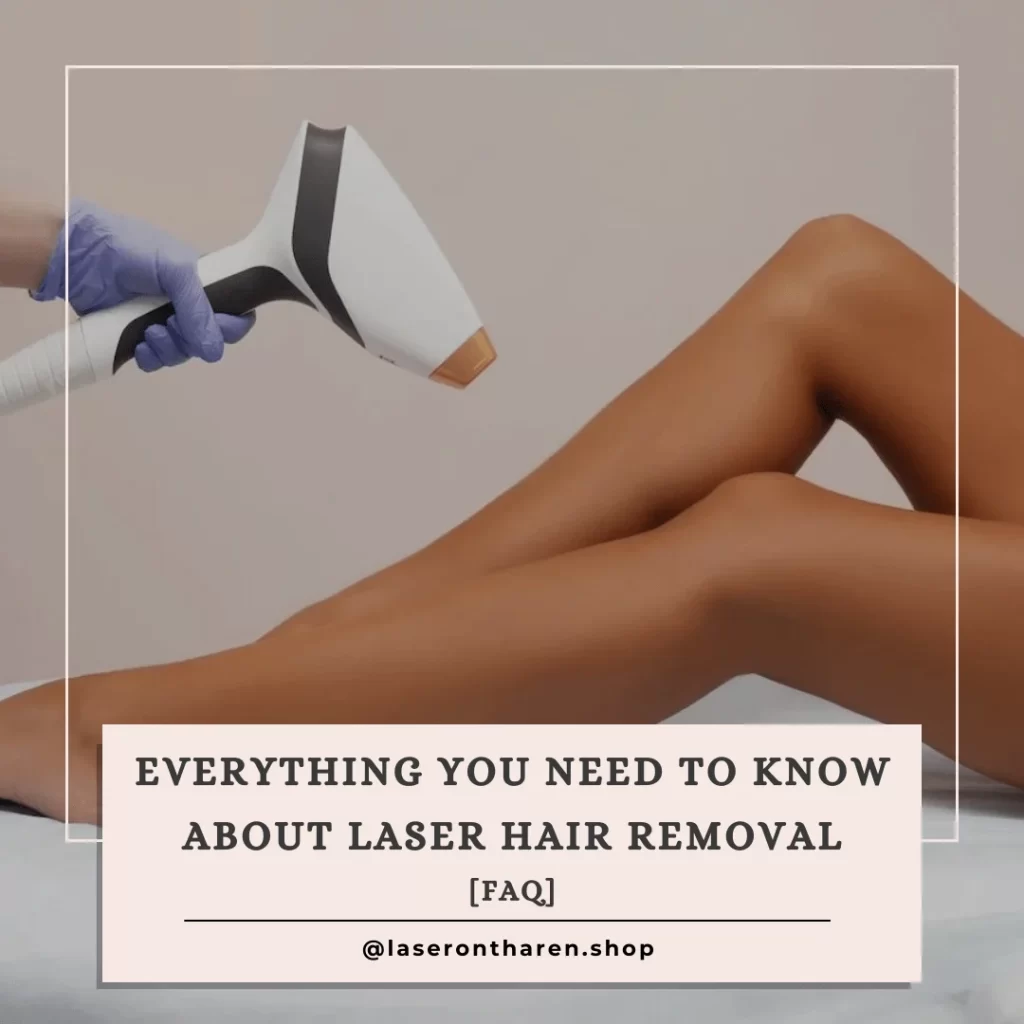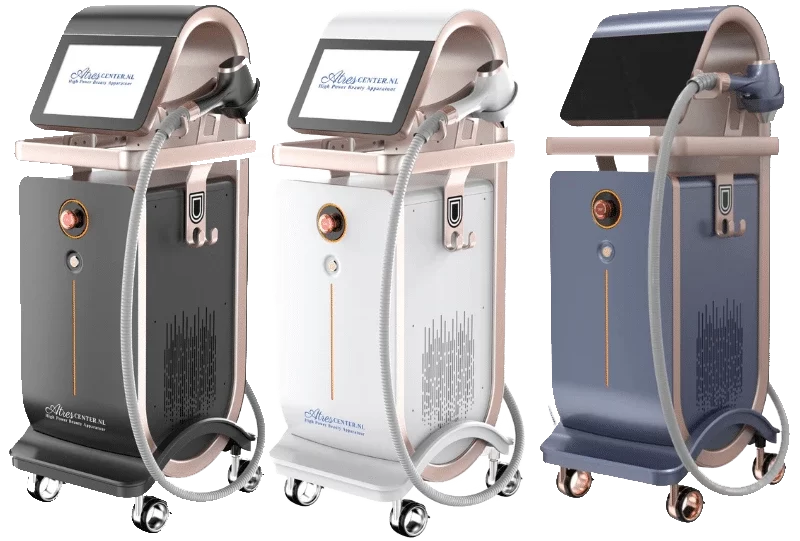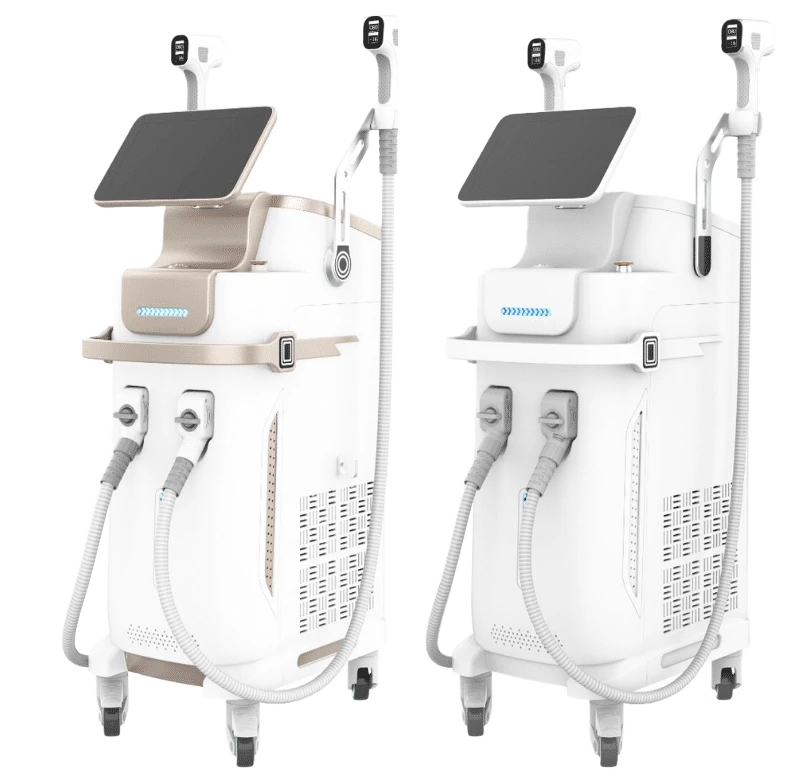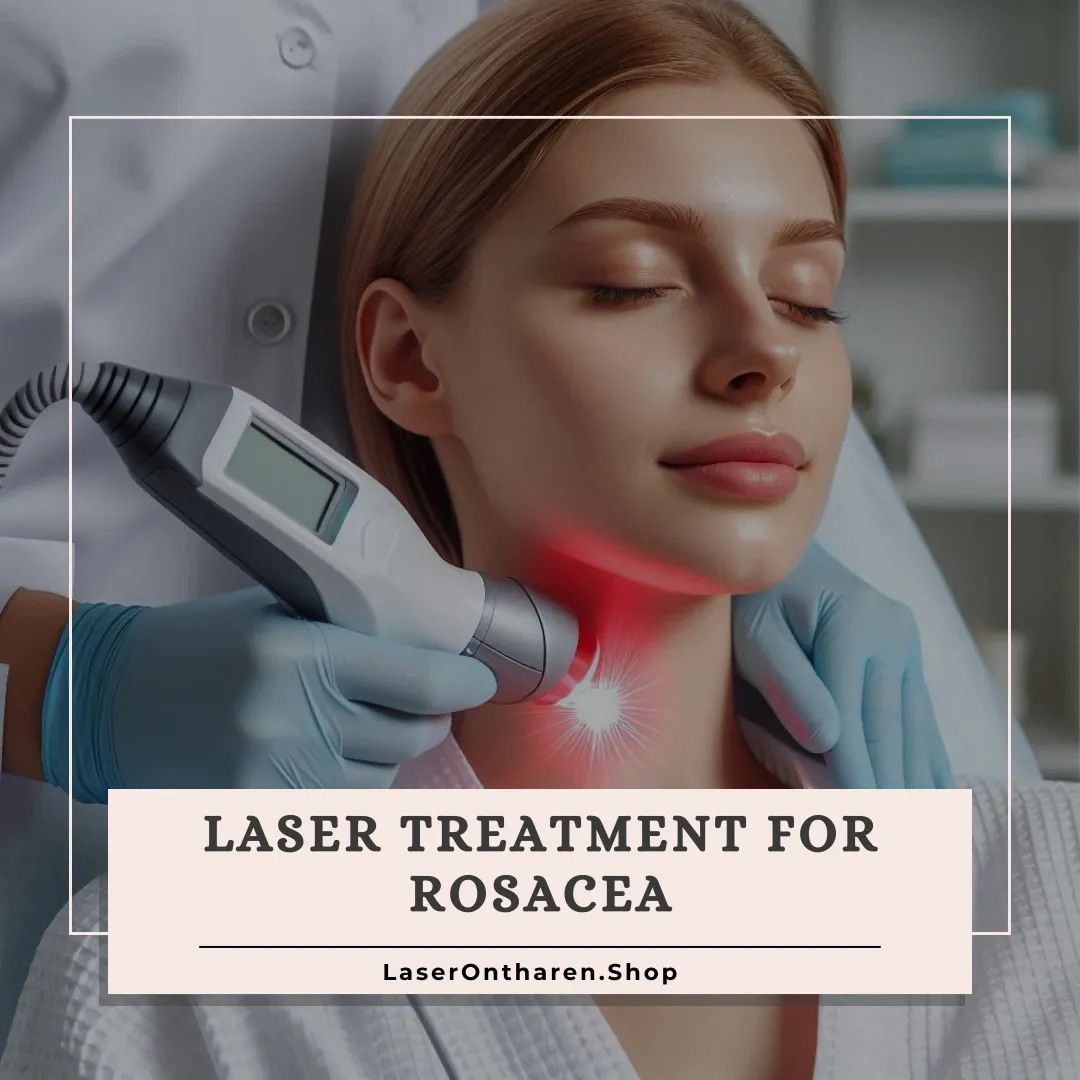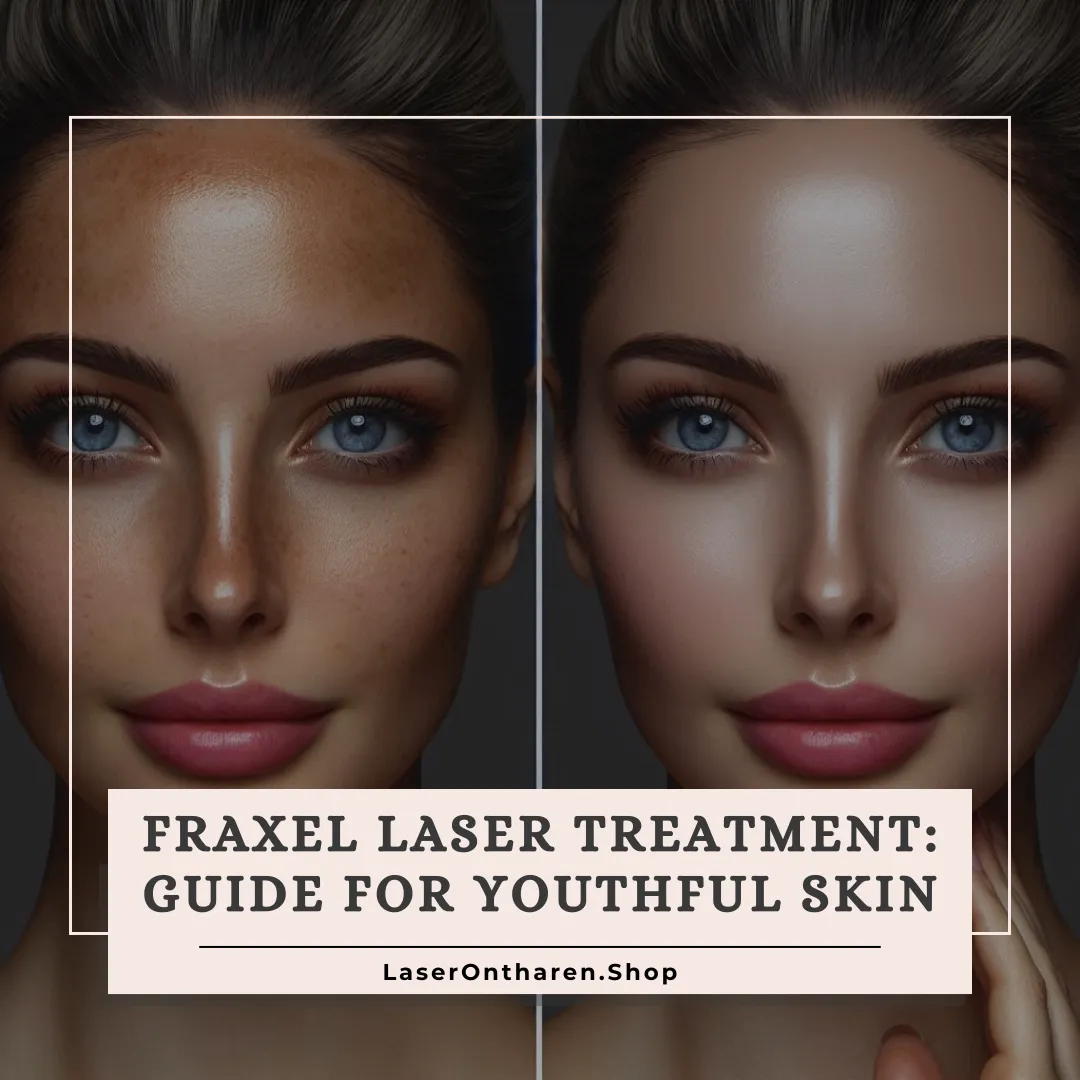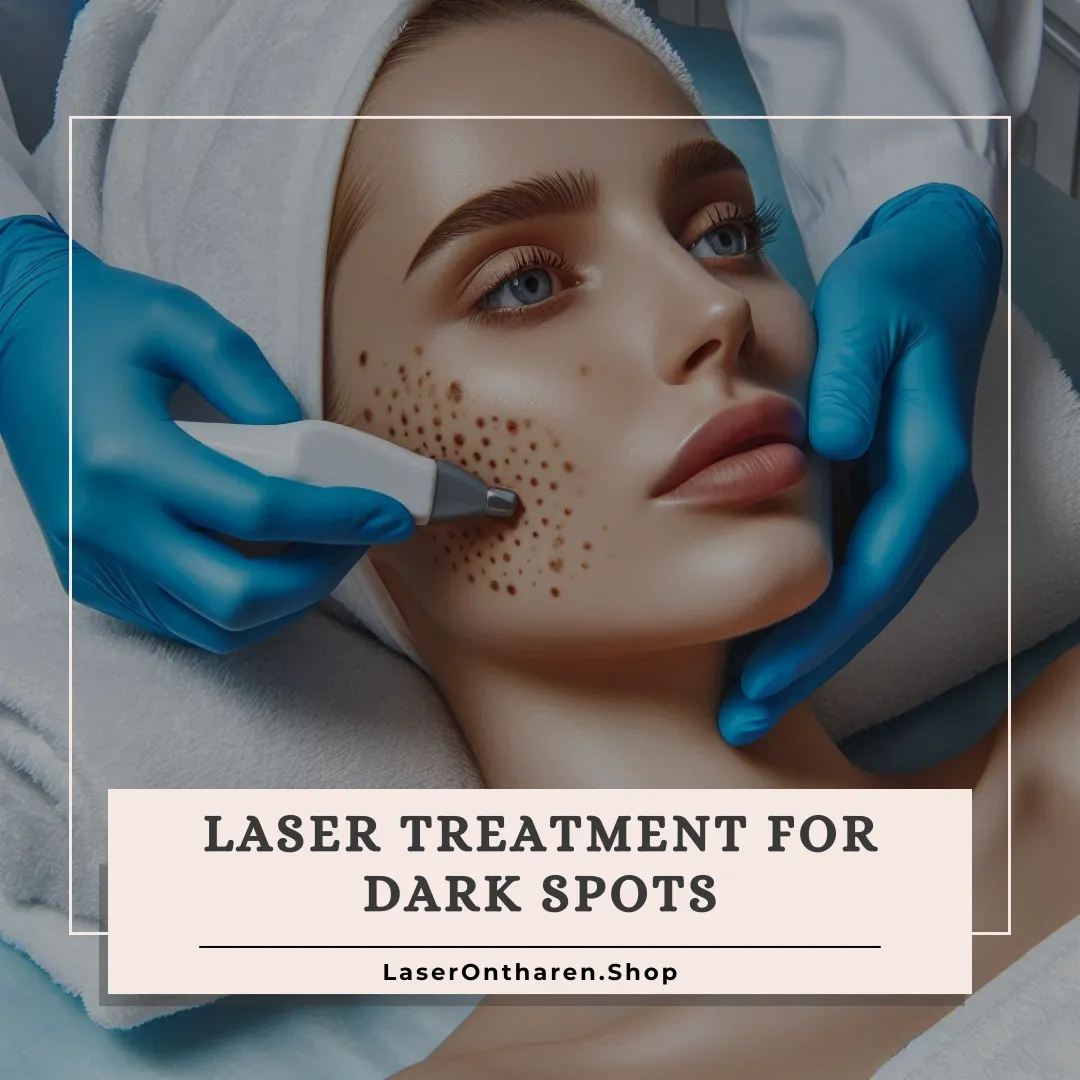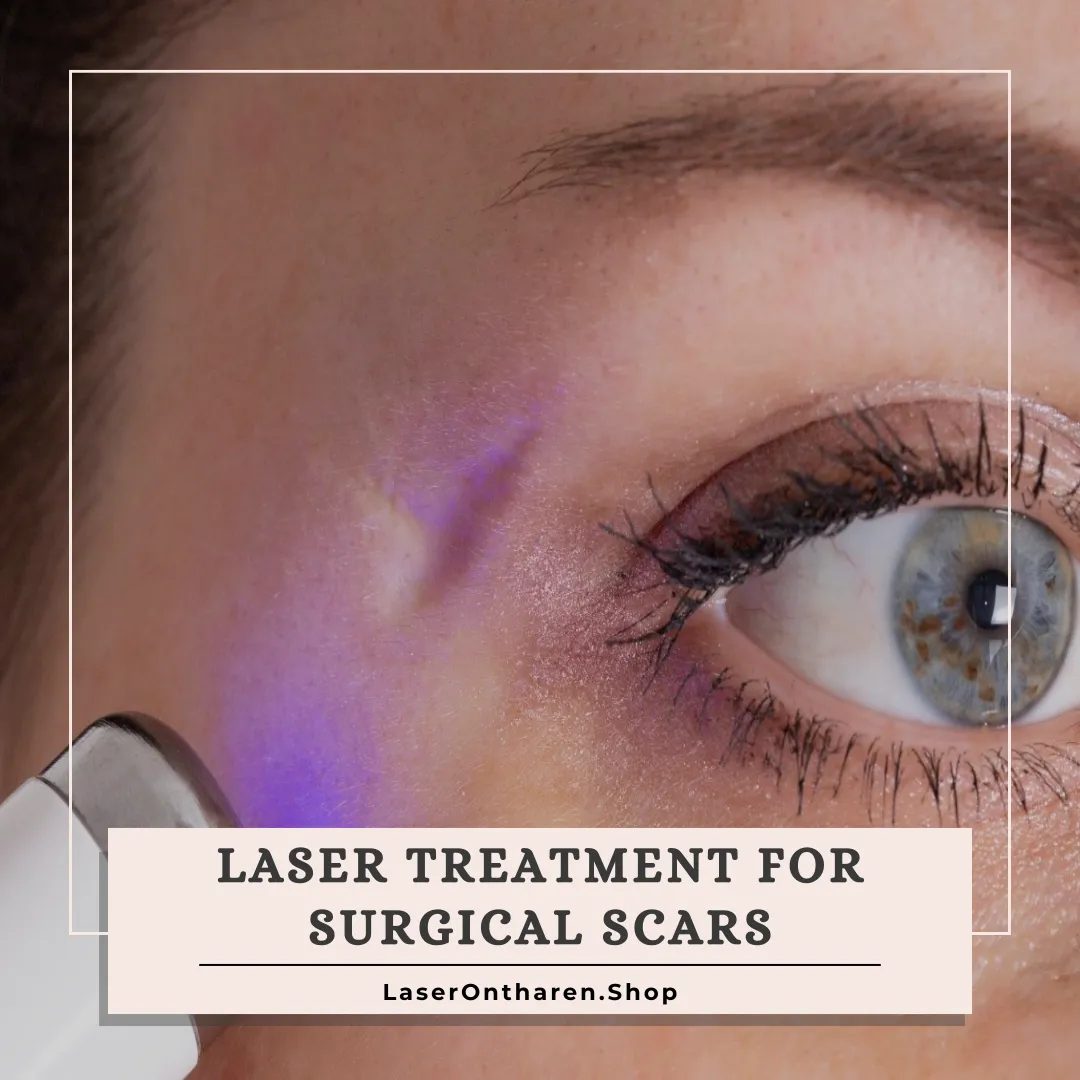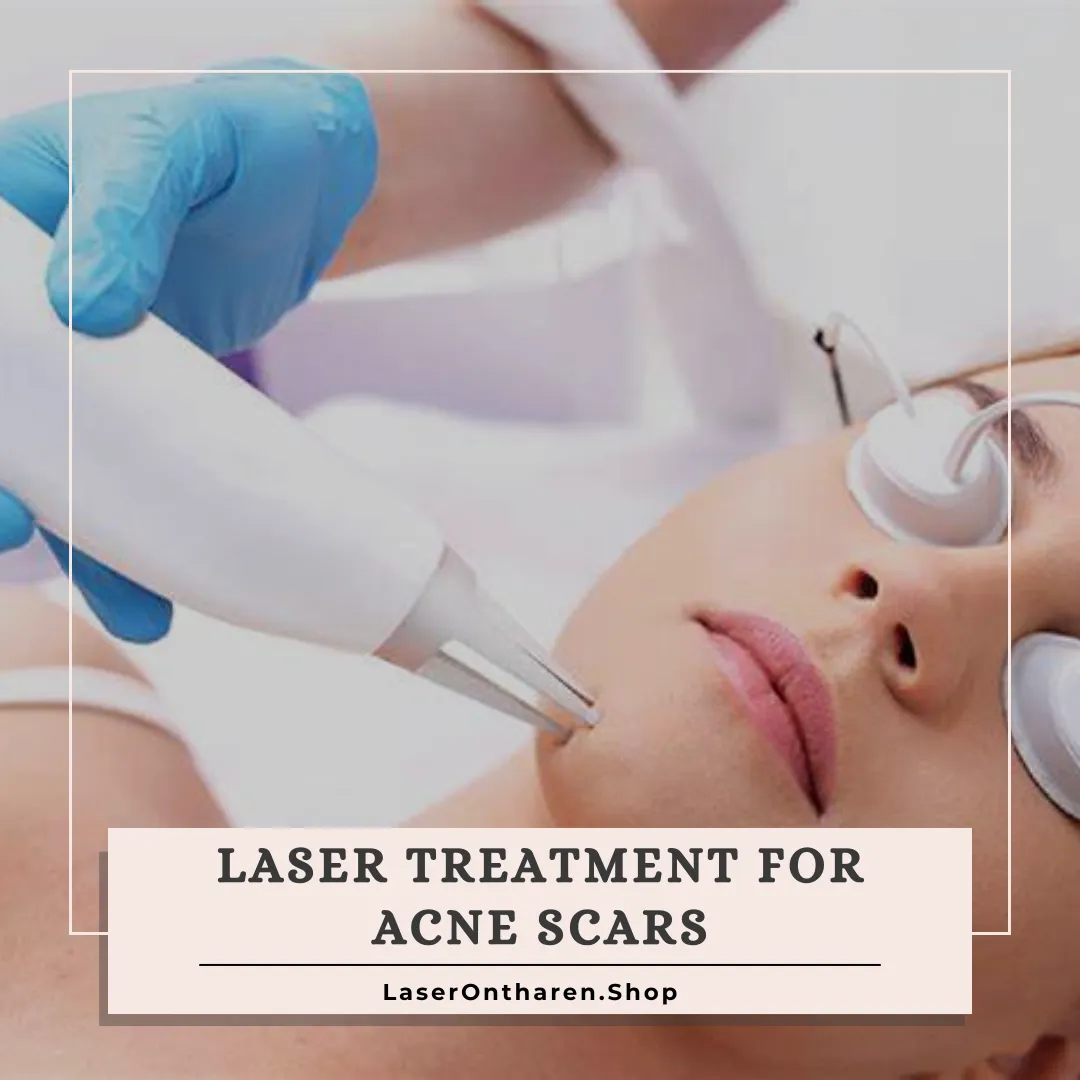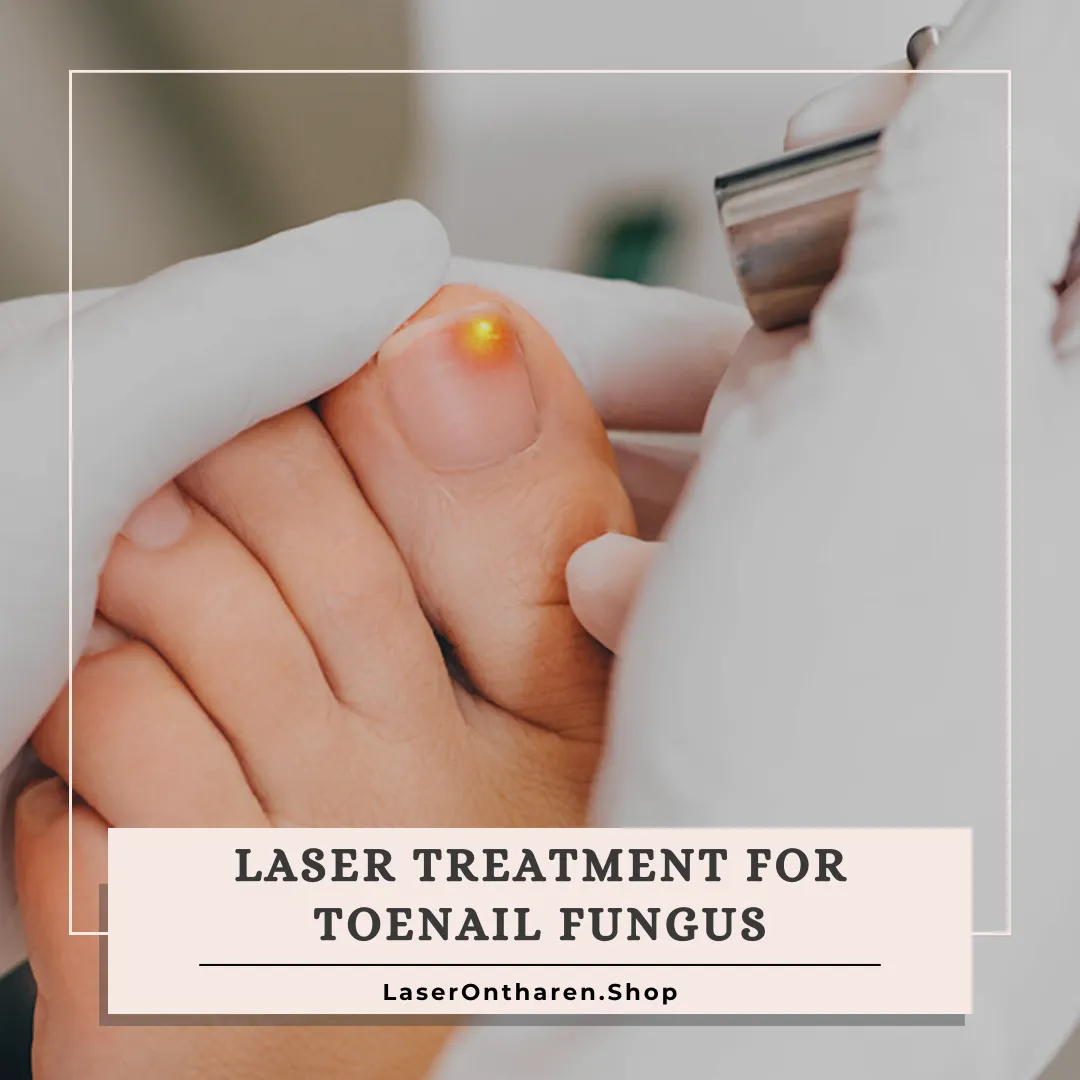Comprehensive FAQ Guide to Laser Hair Removal in the United States : Top 101 Questions Answered
Got any questions about High-Power Diode Laser Ice Pro A+?
Introduction:
Step into the world of laser hair removal with our comprehensive FAQ guide tailored for the United States.
Whether you’re a first-timer curious about the process or a seasoned veteran seeking advanced information, we’ve meticulously curated the top 101 frequently asked questions to offer valuable insights and ensure a smooth journey through the world of laser hair removal.
Let’s embark on this exploration together, unraveling the nuances and demystifying the intricacies to empower you with the knowledge needed for a confident and informed decision.
1. What is laser hair removal?
Laser hair removal is a process where laser light targets hair pigment to reduce unwanted hair.
It’s most effective on dark hair and light skin but advancements allow treatment on darker skin too.
The procedure is versatile, applicable to areas like the face, underarms, and legs.
It requires multiple sessions and isn’t permanent, but it can significantly reduce hair growth.
Preparation involves avoiding sun and certain medications.
Side effects may include skin irritation and pigment changes.
It’s crucial to consult a medical professional before undergoing this procedure to ensure safety and effectiveness.
Learn more about this topic
2. How does laser hair removal work?
Laser hair removal uses selective photothermolysis, targeting melanin in hair.
The laser’s heat is absorbed by the pigment in dark hair, then transferred to the hair follicles, damaging them.
This process prevents future hair growth. Effectiveness varies with hair color and skin type; it works best on dark hair and light skin.
Follicles must be in their growth phase, so multiple treatments are needed. It’s less effective on light-colored hair and darker skin.
Risks include skin irritation and pigment changes, so a qualified healthcare provider should perform it.
The process isn’t permanent, but it significantly reduces hair growth.
3. Is laser hair removal safe?
Laser hair removal is generally considered safe, especially when performed by qualified professionals.
The most common side effects are temporary skin irritation, redness, and swelling.
In some cases, it may cause pigment changes in the skin, which could be temporary or permanent.
The risk of more serious side effects like blistering, scarring, or skin texture changes is rare.
It’s crucial to have a consultation before the procedure to discuss risks and suitability, particularly for those with certain skin types and hair colors.
The effectiveness of the treatment can vary based on these factors.
It’s also important to follow pre- and post-treatment care instructions carefully to minimize risks.
4. What areas of the body can be treated with laser hair removal?
Laser hair removal can be performed on almost any part of the body, except the eyelids and surrounding areas due to the risk of eye injury.
Commonly treated areas include the legs, armpits, upper lip, chin, and bikini line.
It can also be effectively used on larger areas like the back and chest, as well as sensitive areas such as the Brazilian region.
Other treatable areas include the face (including upper lips, chin, sideburns, cheeks, ears, and eyebrows), neck, shoulders, arms, armpits, hands, fingers, bikini area (including extended lines and Brazilian), buttocks, knees, feet, and toes.
The versatility of laser hair removal makes it a popular choice for both cosmetic and practical purposes, catering to different needs and preferences.
Remember that each area might require a different number of sessions for effective hair reduction.
5. How long does a laser hair removal session take?
The duration of a laser hair removal session varies depending on the size and location of the treatment area.
For smaller areas like the upper lip, a session might only take about 5 minutes.
However, for larger areas such as the legs or back, the session could last between 30 to 60 minutes.
The treatment process is relatively quick, and most people describe the sensation during the session as a series of quick, mild pinpricks or similar to a rubber band snapping against the skin.
The number of sessions needed for effective hair removal also depends on the individual’s hair growth cycle, with treatments typically spaced 4-6 weeks apart.
6. How many sessions are typically required for optimal results?
For optimal results in laser hair removal, most patients typically require between 6 to 8 sessions.
These sessions are generally spaced 4 to 6 weeks apart, allowing hair follicles to enter the right growth phase to be effectively targeted by the laser.
It’s important to note that the number of sessions can vary based on individual factors such as hair color, skin tone, the area being treated, and the density of the hair.
After completing the initial course of treatments, maintenance sessions may be needed once or twice a year to maintain results and target any stray hairs that may still grow back.
The process requires patience, as significant hair reduction becomes more noticeable after 3-4 sessions, with optimal results typically seen 6-12 months after the final session.
The majority of patients experience a permanent hair reduction of approximately 80-90% in the treated area.
7. Are there any side effects of laser hair removal?
Laser hair removal generally has a good safety profile, but like any medical procedure, it can have side effects. The most common ones include:
- Skin irritation: Temporary discomfort, redness, and swelling are common immediately after the procedure. These typically subside within a few hours.
- Pigment changes: The treated skin may lighten or darken following laser hair removal, but these changes are usually temporary. People with darker skin and those who don’t avoid sun exposure before and after treatment are more likely to experience these pigment changes.
Less common side effects, which are rare, can include:
- Blistering, crusting, or scarring: Especially if post-treatment care instructions aren’t followed properly.
- Changes in skin texture: This is unusual and more likely if you have a skin infection or scarring history.
- Graying of treated hair or excessive hair growth around treated areas: Particularly on darker skin.
It’s also worth noting that laser hair removal isn’t recommended for the eyelid area or surrounding region due to the risk of severe eye injury.
To minimize the risk of side effects, it’s crucial to have the procedure performed by a qualified and experienced practitioner.
Following pre- and post-treatment care instructions also plays a significant role in ensuring a safe and effective treatment process.
8. Does laser hair removal hurt?
Laser hair removal typically causes some discomfort, but it’s generally less painful than other hair removal methods like waxing.
The sensation is often compared to the feeling of a rubber band snapping against the skin.
The level of discomfort can vary depending on the treatment area, with more sensitive areas like the upper lip, underarms, and bikini line potentially being more painful.
Factors like hydration, sleep, and the phase of your menstrual cycle can also influence pain perception.
Most side effects, like redness and a sensation similar to a mild sunburn, are mild and usually subside within 24 hours.
9. What is the cost of laser hair removal?
The cost of laser hair removal varies depending on several factors including the provider’s expertise, treatment area size, location, and the quality of equipment used.
On average, a single session can cost anywhere from $125 to $1,000.
Smaller areas like the upper lip or chin may be on the lower end of the scale (around $200), while larger areas like the back or legs can be more expensive (up to $550 for the back).
Prices also vary by city, with costs being higher in major metropolitan areas.
It’s important to remember that multiple sessions are typically required for optimal results, and ongoing maintenance may be needed, adding to the overall cost.
10. Is laser hair removal permanent?
Laser hair removal effectively delays hair growth for extended periods but usually doesn’t result in permanent hair removal.
Multiple treatments are necessary for initial hair removal, and maintenance treatments might be needed over time.
While it significantly reduces hair growth, some hair may regrow, usually finer and lighter in color.
The results and permanence can vary significantly from person to person.
11. Who is a suitable candidate for laser hair removal?
The ideal candidates for laser hair removal typically have dark hair and light skin.
This contrast allows the laser to effectively target the pigment within the hair without competing with pigment in the skin.
However, advancements in technology mean that people with darker skin tones can also be successfully treated using specific types of lasers.
Those with blonde, white, or light-colored hair may not be as suitable because these hair types lack the necessary pigment for the laser to target effectively.
It’s also important for candidates not to have skin rashes, infections, open wounds, or tans, depending on the specific laser technology being used.
Individuals with darker skin tones should look for clinics that use lasers like the Nd:YAG laser, which is designed to safely treat darker skin.
The type of laser used, along with pulse duration and other specifics, should be determined by a professional during a consultation, and a patch test is often recommended to ensure safety.
12. Can laser hair removal be performed on all skin types?
Laser hair removal is now possible for all skin types, thanks to technological advancements.
The effectiveness largely depends on the contrast between skin and hair color.
Traditional lasers work best on light skin with dark hair due to the contrast allowing easier targeting of hair melanin.
For darker skin, specific lasers like the Nd: YAG are used to prevent skin damage while effectively targeting hair follicles.
Clinics with advanced lasers can now treat darker skin types effectively, but the success still relies on using the right laser for each individual’s skin and hair characteristics.
It’s important for those with darker skin to seek treatment from experienced professionals to minimize risks and optimize results
13. What is the difference between laser hair removal and other hair removal methods?
Laser hair removal differs from other hair removal methods like shaving, waxing, threading, and depilatory creams in several key ways:
- Technique:
Laser hair removal uses concentrated laser light to target and damage hair follicles, inhibiting future hair growth. This contrasts with methods like shaving (removing hair at the skin’s surface) and waxing (pulling hair out from the root). - Duration of Results:
Laser hair removal offers long-term hair reduction, often leading to permanent results after several sessions. Shaving and depilatory creams provide only short-term results, while waxing and plucking can last a bit longer but still require frequent upkeep. - Pain and Skin Irritation:
Shaving can cause razor burns and ingrown hairs, waxing is often painful and can irritate the skin, and threading/tweezing can be painful in sensitive areas. Laser hair removal, in contrast, is generally less painful, described by some as a slight pinch or tug. - Time and Convenience:
Laser treatments can be quick, with smaller areas treated in minutes and larger areas in under an hour, and they require no preparation. Shaving and cream applications are quick but need to be done frequently, while waxing and threading/tweezing are more time-consuming and may require professional assistance. - Suitability for Skin Types:
Advanced laser technologies have made laser hair removal effective for a variety of skin types, although it’s most effective for those with a high contrast between hair and skin color. Other methods don’t have such limitations but may not be suitable for all skin types due to irritation or allergic reactions. - Cost:
Laser hair removal tends to be more expensive upfront compared to other methods, but it can be cost-effective in the long run due to its permanency. - Areas Treatable:
Almost all body parts can be treated with laser hair removal, except the eyes and tattooed skin, while other methods may have limitations based on the area’s sensitivity or accessibility.
In summary, laser hair removal stands out for its long-term effectiveness, minimal pain, and suitability for a wide range of body areas, though it requires a higher initial investment compared to other methods like shaving, waxing, and depilatory creams.
14. How do I prepare for a laser hair removal session?
To prepare for a laser hair removal session, follow these key steps:
-
- Avoid Sun Exposure: Stay out of the sun and avoid using sunbeds for at least a month before the treatment. Use broad-spectrum SPF30 sunscreen daily.
- Skin Lightening: Don’t use sunless skin creams that darken your skin. If you have a tan or darker skin, your doctor might prescribe a skin bleaching cream.
- Stop Other Hair Removal Methods: Avoid plucking, waxing, and electrolysis at least four weeks prior to treatment as they can disturb the hair follicle.
- Medications: Consult your doctor about any medications you’re taking, especially those that are blood-thinning.
- Shave the Treatment Area: Shave the area to be treated the day before your session. This helps the laser target the hair follicles effectively without burning the hair on the skin’s surface.
15. Can I undergo laser hair removal if I have a tan?
Undergoing laser hair removal with a tan is possible, but it’s important to be cautious.
Tanned skin has more melanin, which can affect the laser’s ability to target hair follicles effectively and increase risks like irritation, burning, or scarring.
It’s recommended to avoid tanning and sun exposure for at least two to four weeks before the session.
After laser hair removal, you should also protect your skin from the sun to avoid complications and ensure effective treatment.
Consulting with your healthcare provider before the session is crucial, especially if you have had recent sun exposure or a tan.
16. Are there any age restrictions for laser hair removal?
There’s no universal age limit for laser hair removal, but it’s generally not recommended for children and adolescents due to ongoing hormonal changes that can affect hair growth patterns.
Most experts consider the procedure more suitable for late teens or early adulthood when hormonal changes have stabilized.
Laser hair removal works best on individuals with fair skin and dark hair.
Before undergoing the procedure, it’s important to have a consultation with a qualified professional to assess suitability based on individual circumstances like skin and hair type, medical history, and any underlying conditions.
It’s also crucial to understand the procedure’s risks and benefits, especially for younger individuals.
For those under 18, parental consent and a thorough evaluation are typically required.
17. Can pregnant or breastfeeding individuals undergo laser hair removal?
Laser hair removal is generally not recommended for pregnant or breastfeeding individuals.
The lack of safety testing on pregnant and nursing women, due to ethical and risk concerns, means that the effects of laser hair removal during these stages are not well understood.
As a result, most guidelines and professionals in the field advise against undergoing laser hair removal if you’re pregnant, trying to become pregnant, or breastfeeding.
It’s best to consider alternative hair removal methods during pregnancy and breastfeeding and consult with a healthcare provider for personalized advice.
18. What should I expect during a laser hair removal session?
During a laser hair removal session, expect the following steps:
-
- Preparation: You’ll wear protective eyewear. The treatment area might be shaved again if necessary.
- Procedure: The laser device is pressed against your skin. A cooling mechanism or gel is used to protect your skin and reduce discomfort.
- Sensation: You may feel discomfort like a warm pinprick or a cold sensation from the cooling device or gel.
- Duration: Small areas like the upper lip take only a few minutes, while larger areas like the back can take over an hour.
- Post-Procedure: Redness and swelling are common but temporary. Follow post-treatment care instructions provided by the practitioner.
19. Can laser hair removal be done on facial hair?
Yes, laser hair removal can be done on facial hair.
It’s commonly used to remove hair from areas like the upper lip, chin, and sideburns.
However, it’s not recommended for eyelids or the surrounding area due to the risk of eye injury.
The procedure involves targeting hair follicles with a laser to reduce hair growth.
It’s important to consult with a qualified professional to ensure the procedure is suitable for your skin type and hair color.
As with any laser treatment, following safety guidelines and post-treatment care instructions is crucial.
20. Is laser hair removal effective on blonde or gray hair?
Laser hair removal is generally less effective on blonde or gray hair.
The laser targets the melanin (pigment) in hair, and blonde or gray hair has less melanin, making it harder for the laser to detect and effectively target the hair follicles.
As a result, individuals with blonde, gray, or even white and red hair may not see as significant results as those with darker hair.
However, advancements in laser technology are ongoing, and some newer lasers are designed to target lighter hair more effectively.
It’s advisable to consult with a professional to determine the suitability of laser hair removal for your specific hair type.
21. How long do the results of laser hair removal last?
The results of laser hair removal can last for several months to years, and in some cases, they can be permanent.
However, most people require multiple sessions to achieve optimal hair reduction, and maintenance treatments may be needed over time.
The longevity of results varies greatly among individuals and depends on factors like hair color, skin type, and the area treated.
Typically, after each session, you’ll see a noticeable, permanent reduction in the number of hairs that regrow.
Over time, with the right number of sessions, many people find that they have a significant and long-lasting reduction in hair.
22. Are there any post-treatment care instructions for laser hair removal?
After laser hair removal, it’s important to follow certain post-treatment care instructions to ensure the best results and minimize side effects:
1. Moisturize the treated area with Vaseline or Aquaphor.
2. Avoid direct sun exposure and tanning beds for at least three days. Apply SPF 50+ sunscreen to the treated area when outside.
3. Avoid steam rooms, saunas, hot tubs, and exercise that induces sweating for 24 hours.
4. Take cool or lukewarm showers, avoiding hot water. Gently pat the treated area dry.
5. Avoid irritating products like harsh soaps, scrubs, and retinoids for at least three days.
6. For redness or discomfort, apply cool ice packs and hydrocortisone cream.
In case of itching or bumps (folliculitis), over-the-counter antihistamines and hydrocortisone cream can be used.
If you experience severe side effects or have concerns, contact your healthcare provider.
23. Can I shave between laser hair removal sessions?
Yes, you can shave between laser hair removal sessions.
Shaving is actually recommended because it removes hair above the skin while leaving the hair shaft intact below the surface.
This allows the laser to effectively target the hair follicles during the next session.
However, it’s important to avoid other methods of hair removal such as plucking, waxing, and electrolysis, as they remove the hair from the follicle, making laser treatments less effective.
24. What is the difference between IPL and laser hair removal?
IPL (Intense Pulsed Light) and laser hair removal both target hair follicles using light to prevent hair regrowth, but they use different types of light. IPL employs broad-spectrum light, covering a wide range of the electromagnetic spectrum, making it suitable for various skin and hair types.
It’s often cheaper, with quicker session times, but may require more sessions.Laser hair removal, on the other hand, uses a focused laser beam, allowing precise targeting of hair follicles.
This method is typically quicker in showing results, may require fewer sessions, and is more suitable for darker skin.
However, it’s generally more expensive and sessions might take longer.
Both methods have their unique advantages, and the choice between them depends on individual factors like skin type, hair color, and budget.
25. Can laser hair removal treat ingrown hairs?
Laser hair removal is effective in treating and preventing ingrown hairs.
The procedure targets the hair follicles, reducing the chances of hair growing back and curling under the skin, which is what causes ingrown hairs.
This method is particularly beneficial for those who frequently experience ingrown hairs as a result of other hair removal methods like shaving or waxing.
Over time, as the amount of hair decreases due to laser treatments, the occurrence of ingrown hairs also reduces significantly.
26. Are there any medications that should be avoided before laser hair removal?
Before undergoing laser hair removal, it’s important to avoid certain medications due to their photosensitive nature.
These drugs can react to UV light and may cause adverse reactions when combined with the laser treatment.
Common medications to avoid include some acne medicines (especially those containing Retin-A), certain antidepressants like Zoloft and Prozac, and antihistamines such as Benadryl and Claritin.
The reaction to these drugs with laser treatment can vary, but common side effects include skin irritation like hyperpigmentation, blisters, and mild burns.
It’s crucial to inform your laser specialist about all the medications you’re taking, including over-the-counter drugs and herbal remedies, to ensure safe and effective treatment.
27. Can laser hair removal be done on sensitive skin?
Laser hair removal is generally safe for individuals with sensitive skin.
However, it’s crucial to choose a reputable dermatologist or laser technician experienced in treating sensitive skin.
They can adjust the laser settings to minimize skin irritation or damage.
A patch test is recommended for those with a history of skin reactions or allergies to determine how the skin reacts to the laser.
The procedure may not be suitable for all skin colors, as the laser targets the pigment in the hair follicle, and is most effective on people with darker hair and lighter skin.
Avoid using skin bleaching creams before or after the treatment, as these can increase skin sensitivity to the laser.
28. How soon after sun exposure can I undergo laser hair removal?
It’s recommended to avoid sun exposure for at least two weeks prior to undergoing laser hair removal.
This precaution is important because sun exposure can make the skin more sensitive to heat, and the laser treatment on heat-sensitive or tanned skin can increase the risk of side effects like hyperpigmentation, burns, and scarring.
After the treatment, avoiding sun exposure is also advised for a similar duration to allow the treated skin to heal properly and reduce the risk of complications.
Always use a broad-spectrum sunscreen with a high SPF if sun exposure is unavoidable.
29. Can I exercise after a laser hair removal session?
After a laser hair removal session, it’s generally advised to wait at least 24 to 48 hours before engaging in strenuous exercise.
This is because the treated area can be sensitive, and exercising might increase blood flow and body temperature, potentially irritating the skin.
Sweating can also raise the risk of infection in the treated area, as it might still be sensitive post-treatment.
Light exercises like walking or gentle stretching are usually okay, but it’s important to listen to your body and halt activity if you experience discomfort or skin irritation.
For more detailed information, you can visit ShunHair.
30. Can laser hair removal be done on tattoos?
It’s not safe to perform laser hair removal over a tattoo.
The laser cannot distinguish between the pigment in your hair follicle and the pigment in the tattoo ink, which can cause the tattoo pigment to scatter and potentially reduce its color.
dditionally, performing laser hair removal over a tattoo can lead to burns, blisters, or skin damage.
If you have tattoos and want laser hair removal, it’s possible to receive treatment on areas without tattoos or around them, but not directly over them.
It’s crucial to consult with experienced laser technicians who can safely treat around your tattoo.
31. Is laser hair removal FDA-approved?
Yes, laser hair removal is FDA-approved. The first FDA-approved laser for hair removal was introduced in 1995.
The FDA reviews and approves laser devices for safety and effectiveness, allowing them for the purpose of “permanent hair reduction” but not permanent hair removal.
This means while these devices significantly reduce hair growth, some hair may regrow over time.
The FDA has approved various types of lasers for this procedure, including diode and alexandrite lasers, which are effective for different skin types and hair colors.
Before undergoing laser hair removal, it’s essential to consult with a qualified professional to ensure the treatment is appropriate for your skin type and to understand any potential risks like skin irritation or discoloration.
For those considering this procedure, it’s crucial to choose a provider with the proper certification and experience, as the FDA also sets standards for how these devices are manufactured and used to ensure safety and efficacy
32. How does laser hair removal affect different hair colors?
Laser hair removal effectiveness varies significantly based on hair color due to the laser’s reliance on melanin, the pigment in hair, to target and destroy hair follicles.
Dark hair, which has a high melanin content, absorbs the laser light more effectively, making laser hair removal most efficient on individuals with dark hair.
This results in quicker and more permanent hair reduction compared to lighter hair colors.
For lighter hair colors like blonde, red, gray, and white, the lack of melanin can make laser hair removal challenging and potentially less effective.
These hair colors do not absorb the laser light as well, which means that it can take more sessions to achieve noticeable results, and the overall effectiveness can be limited.
However, advancements in laser technology have improved the outcomes for lighter hair colors, though multiple treatments are usually necessary, and complete hair removal might not be achieved.
33. What factors can affect the success of laser hair removal?
The success of laser hair removal can be influenced by several key factors:
- Skin and Hair Color: Ideal candidates have light skin and dark hair due to the laser’s targeting of the melanin (pigment) in the hair, which stands out against lighter skin.
- Hair Thickness and Color: Thicker and darker hair absorbs laser energy more effectively, making the treatment more successful. Lighter or finer hair might require more sessions.
- Hormonal Influences: Hormone levels can affect hair growth. Fluctuations due to conditions like PCOS, pregnancy, or menopause can impact the results, as can hormone-altering medications.
- Growth Cycles of Hair: Lasers target hair in the anagen (growth) phase. Since not all hairs are in this phase simultaneously, multiple treatments are usually necessary.
- Sun Exposure and Skin Condition: Sun exposure should be avoided before treatments as it can reduce effectiveness and increase side effects. Skin condition can also impact treatment, with irritated or damaged skin possibly requiring postponed sessions.
- Medications: Some medications, especially those that are photosensitizing, can affect treatment outcomes and increase sensitivity to the laser’s light.
- Proper Preparation: The treatment area should not be plucked, waxed, or otherwise disturbed beyond shaving before treatment to ensure the laser targets the hair follicles effectively.
Proper consultation with a qualified professional can help tailor the treatment to individual needs and circumstances, improving the likelihood of successful outcomes.
34. Can laser hair removal be performed on individuals with a history of keloid scars?
Yes, individuals with a history of keloid scars can undergo laser hair removal, but it should be approached with caution.
Laser hair removal can be a viable option because it does not involve cutting the skin, which typically triggers keloid formation.
However, the laser procedure itself can sometimes irritate the skin and potentially lead to keloid formation in predisposed individuals.
For those with keloid scars, it’s important to consider the following:
- Laser hair removal might not cause additional scarring like other hair removal methods that involve skin trauma, such as waxing or shaving.
- Proper aftercare and cautious treatment planning are essential to minimize the risk of keloid formation post-treatment.
- Consulting with a dermatologist or a laser treatment professional who understands the complexities associated with skin prone to keloids is crucial. They can provide a tailored approach that considers the severity of the keloid history and the specific areas being treated.
If you have a history of keloids, discussing your concerns and medical history with a qualified healthcare provider before undergoing laser hair removal is essential.
This ensures the treatment plan is safe and effective for your specific condition
35. Are there any restrictions on using skincare products before laser hair removal?
Before undergoing laser hair removal, it’s important to avoid certain skincare products to minimize skin sensitivity and maximize treatment effectiveness.
Here are the key guidelines:
-
- Avoid Exfoliants and Strong Ingredients:
For 5-7 days before your treatment, steer clear of products containing alpha hydroxy acids (AHAs), beta hydroxy acids (BHAs), hydroquinone, retinols, retinoids (like Retin-A or Differin), salicylic acids, sugar or salt scrubs, and benzoyl peroxide. These ingredients are known for their exfoliating properties and can make the skin more sensitive to the laser treatment. - Sun Exposure and Tanning:
It’s crucial to avoid sun exposure, tanning beds, and self-tanning products for at least two weeks before the treatment. Sun-tanned skin can increase the risk of side effects like burns because the laser targets the melanin in the skin. - Medications and Treatments:
Discuss any medications you’re taking with your provider, especially those that might cause photosensitivity. It’s also advisable to avoid other aesthetic treatments that might irritate the skin in the treated area. - Day of Treatment Preparations:
On the day of your treatment, ensure the area to be treated is clean and free of any products like makeup, deodorant, lotions, or creams. It’s best to arrive with clean, dry skin. - Hair Removal Methods:
In the six weeks leading up to your treatment, avoid plucking, waxing, or using depilatory creams in the treatment area as these methods remove hair from the root, which is necessary for the laser to target effectively.By following these pre-treatment care guidelines, you can help ensure a safer and more effective laser hair removal process.
- Avoid Exfoliants and Strong Ingredients:
36. Can laser hair removal reduce excessive hair growth caused by medical conditions?
Yes, laser hair removal can be an effective treatment for reducing excessive hair growth caused by medical conditions such as hirsutism.
Hirsutism often results from conditions that increase androgen levels, like polycystic ovary syndrome (PCOS), leading to unwanted male-pattern hair growth in women.
Laser hair removal targets and damages these excess hair follicles, potentially reducing hair growth significantly.
However, it’s important to note that while laser hair removal can provide relief from the symptoms of hirsutism, it does not address the underlying hormonal imbalances.
Patients may see optimal results when laser treatments are combined with medical treatments that address the hormonal aspects of their conditions.
For instance, medications that reduce androgen levels or inhibit hair growth can complement the effects of laser hair removal.
Laser hair removal requires multiple sessions to catch all hair follicles in their active growth phase, and its effectiveness can vary based on the individual’s hair and skin type.
37. What is the recommended interval between laser hair removal sessions?
The recommended interval between laser hair removal sessions typically ranges from 4 to 6 weeks.
This spacing allows the hair to progress through its growth cycles, particularly the anagen phase, which is the active growth stage when the laser treatment is most effective.
For areas with denser or coarser hair, like the underarms or bikini area, maintaining this interval is crucial to catch as many hairs in the anagen phase as possible across multiple sessions.
For facial hair, which can have faster growth cycles, the sessions might be scheduled a bit closer together, but generally, the 4 to 6-week rule applies broadly to ensure optimal effectiveness and safety of the treatment
38. Can I undergo laser hair removal if I have a skin condition like eczema or psoriasis?
You can undergo laser hair removal if you have eczema or psoriasis, but it’s important to take certain precautions:
- Avoid Active Flare-Ups: Don’t do laser treatments on areas currently experiencing a flare-up of eczema or psoriasis. Wait until your skin is clear and fully healed.
- Consult a Specialist: Before starting treatment, consult with a dermatologist or qualified healthcare provider who can assess whether laser hair removal is safe for you, considering your skin condition.
- Consider Skin Sensitivity: If you have eczema or psoriasis, your skin may be more sensitive, which can increase the risk of side effects from the laser, such as irritation or burns.
- Benefits vs. Risks: Laser hair removal can reduce the need for shaving or waxing, which might benefit skin health by decreasing irritation. However, the procedure itself can also irritate the skin, so weigh these factors carefully with a healthcare provider.
- Proper Preparation and Aftercare: Ensure proper skin care before and after treatments, avoiding anything that could irritate your skin, such as certain medications, sun exposure, and irritating skincare products.
Always ensure that your skin condition is well-managed and stable before considering laser hair removal.
39. Is laser hair removal suitable for transgender individuals?
Laser hair removal is a suitable and effective option for transgender individuals seeking to reduce unwanted hair.
This treatment can be particularly beneficial as it offers a more permanent solution compared to shaving or waxing, which can be especially important for those undergoing or considering gender affirmation procedures.
For transgender women, laser hair removal can be an integral part of the preparation for gender-affirming surgeries, such as vaginoplasty, where hair removal in genital areas is necessary to avoid complications like hair growth inside the neovagina.
Similarly, transgender men might seek hair removal on potential donor sites for phalloplasty.
The process is generally safe for all skin types thanks to advances in laser technology, but it’s important to choose a clinic that understands and respects the unique needs of transgender clients.
Many clinics offer a supportive and inclusive environment, ensuring that the treatment process is both comfortable and affirming.
It’s recommended to consult with healthcare providers to discuss how treatments can be aligned with other aspects of transition, such as hormone replacement therapy.
Hormones can affect hair growth, so coordinating these treatments is key to achieving the best results.
40. Can laser hair removal be done on dark skin tones?
Yes, laser hair removal can be safely and effectively performed on dark skin tones when using the appropriate laser technology and settings.
The Nd:YAG laser and diode laser are recommended for darker skin because they have longer wavelengths that can better target the hair follicle without affecting the surrounding skin, which minimizes the risk of side effects such as burns or hyperpigmentation.
When considering laser hair removal, it’s essential to choose a clinic with practitioners experienced in treating darker skin tones.
This ensures that they can appropriately adjust the laser settings to safely and effectively reduce hair while minimizing risks.
It’s also advised for patients to avoid sun exposure and tanning before treatments to reduce melanin levels in the skin, which can help improve the results and reduce the risk of complications.
While individuals with darker skin might require more sessions compared to those with lighter skin, the long-term results are comparable, offering a significant reduction in hair growth and smoother skin.
41. How long before a special event should I undergo laser hair removal?
For optimal results and to ensure your skin looks its best for a special event, it’s recommended to start your laser hair removal treatments well in advance.
Ideally, you should begin treatments about 4 to 6 months before your event.
This timeframe allows for multiple sessions, which are typically spaced 4 to 8 weeks apart, depending on the area being treated and your hair growth cycle.
Starting early also gives your skin ample time to heal and any redness or swelling to subside after your final session.
Additionally, you should avoid sun exposure for at least two weeks before each treatment to prevent skin sensitivity and potential complications.
After your treatment, continuing to protect the treated area from the sun is crucial to avoid hyperpigmentation and ensure the best possible results.
If your event involves potential sun exposure, such as a beach wedding, being diligent about sunscreen application and physical barriers (like clothing) is key.
42. Can laser hair removal be performed on individuals with hormonal imbalances?
Laser hair removal can be a viable option for individuals with hormonal imbalances, such as those caused by conditions like polycystic ovary syndrome (PCOS) or hirsutism, which often lead to excessive hair growth.
The procedure targets the hair follicles and reduces hair growth effectively, although individuals with hormonal imbalances may require more sessions to achieve optimal results due to ongoing hormonal fluctuations that can stimulate hair regrowth.
It’s important to consult with a qualified healthcare provider who can assess your specific situation and determine the best course of treatment.
The success of laser hair removal in such cases can also depend on the type of laser used, with options like the Nd:YAG laser being beneficial for targeting hair in individuals with darker skin tones or deeper hair follicles associated with hormonal imbalances.
While laser hair removal can provide significant benefits, including reduced hair growth and prevention of ingrown hairs, it’s crucial to be aware of potential side effects.
These can include temporary redness, swelling, and discomfort in the treated area. Proper aftercare, such as avoiding direct sunlight and applying sunscreen, is essential to minimize risks and ensure the best possible results.
43. What is the most common type of laser used for hair removal?
The most common types of lasers used for hair removal include the Diode, Alexandrite, Nd:YAG, and Ruby lasers.
Each of these lasers has specific characteristics that make them suitable for different skin types and hair colors.
- Diode Laser: This laser is particularly effective for people with fair to medium skin tones and can treat a wide range of skin and hair types. It emits a longer wavelength of light, allowing for deeper penetration into the skin and making it a versatile choice for larger body areas.
- Alexandrite Laser: Known for its faster treatment times, the Alexandrite laser is ideal for those with light to olive skin tones. It works best on larger areas such as the legs and back and is effective for removing hair quickly.
- Nd:YAG Laser: This type of laser is suitable for all skin types, including darker skin tones. It uses a long wavelength that can safely penetrate deeper into the skin without affecting the surrounding tissue, making it a good option for individuals with darker skin.
- Ruby Laser: One of the oldest types of hair removal lasers, the Ruby laser is most effective for individuals with light skin and fine hair. It is less commonly used today due to advancements in technology but is still effective for small areas.
These lasers differ primarily in their wavelength and how they target the melanin in the hair follicle, which affects their suitability for different skin and hair types.
It’s important to choose the right type of laser based on individual skin and hair characteristics to ensure safety and effectiveness
44. Can laser hair removal treat fine or vellus hair?
Laser hair removal can be less effective on fine or vellus hair (often referred to as peach fuzz) due to its light color and minimal melanin content.
Lasers target the melanin in the hair, and since vellus hair contains little, it may not absorb the laser energy as effectively as darker, coarser hair.
However, with multiple treatments, there can be some reduction in finer facial hair, especially for individuals with fair skin and darker vellus hair.
The success of these treatments can vary based on factors like hair and skin color, as well as the type of laser used.
45. Are there any long-term risks associated with laser hair removal?
Laser hair removal is generally considered safe and effective for long-term hair reduction.
However, like any cosmetic procedure, it does carry some potential risks, especially if not performed correctly.
Common side effects include temporary redness, swelling, and discomfort in the treated areas.
More rare and serious side effects could involve changes in skin pigmentation, either lightening or darkening of the skin, which may be temporary or permanent.
Such pigment changes tend to occur more frequently in individuals who don’t avoid sun exposure before and after treatments or those with darker skin tones.
Other infrequent but possible risks include blistering, crusting, scarring, or other textural changes in the skin.
There’s also a small risk of the treated hair becoming grey or excessive hair growth around treated areas, especially in those with darker skin.
It’s crucial to consult with a healthcare provider to thoroughly discuss these risks and to ensure the procedure is carried out by a qualified professional in a controlled setting to minimize complications.
Proper pre-treatment care, such as avoiding sun exposure and certain medications that affect skin sensitivity, is also essential for minimizing risks and achieving the best results.
46. Can I apply numbing cream before a laser hair removal session?
Yes, you can apply numbing cream before a laser hair removal session to help minimize any pain or discomfort during the procedure.
It’s important to use the numbing cream correctly to ensure it’s effective and safe. Here are some general guidelines:
- Choose the Right Numbing Cream: Look for creams containing lidocaine, which is a common active ingredient used for numbing the skin. Over-the-counter numbing creams usually have concentrations ranging from 2% to 5% lidocaine.
- Application Timing: Apply the numbing cream to the treatment area about 30 minutes to one hour before the laser session. This timing allows the active ingredients to penetrate the skin and effectively numb the area.
- Proper Application: Clean and dry the area where you will apply the numbing cream. Apply a generous amount of cream and cover it with a plastic wrap to enhance absorption. This method is known as occlusion and can increase the numbing effect, although it should be done with caution as it can also increase the risk of side effects such as skin irritation or systemic absorption.
- Consult with Your Technician: It’s advisable to discuss the use of numbing cream with your laser technician or healthcare provider before your session. They may have specific products or protocols they recommend or provide.
While numbing creams are generally safe, they should be used as directed to avoid potential side effects like skin irritation or more rare effects such as an increase in heart rate if absorbed systemically.
Always follow the product instructions and consult with a professional if you’re unsure.
47. How do I choose a reputable laser hair removal clinic?
Choosing a reputable laser hair removal clinic involves several key considerations to ensure you receive safe and effective treatment.
Here are some important factors to guide your decision:
- Credentials and Licensing:
Verify that the clinic has proper licensing and that the practitioners are certified to perform laser hair removal. Check their qualifications and experience levels to ensure they have the necessary expertise. - Technology and Equipment:
The clinic should use modern, FDA-approved laser equipment tailored to different skin types and hair colors. Advanced technology contributes to the effectiveness and safety of the treatment. - Cleanliness and Hygiene:
The treatment environment should be clean and well-maintained. This reduces the risk of infection and ensures the procedures are carried out in a safe setting. - Consultation and Customization:
Look for clinics that offer a thorough initial consultation to assess your specific needs and plan the treatment accordingly. This should include a discussion about your skin type, hair color, and any underlying skin conditions. - Pricing Transparency:
Choose a clinic that provides clear, upfront information about the costs associated with your treatment. This should include details about any packages or additional fees that may apply. - Client Reviews and Testimonials:
Research the clinic’s reputation through reviews and testimonials from previous clients. Positive feedback is a good indicator of satisfaction and success. - Aftercare and Follow-Up:
A good clinic will provide comprehensive aftercare instructions and be available for follow-up consultations to ensure the treatment’s success and your satisfaction with the results.
By considering these factors and taking the time to research potential clinics, you can make an informed choice that ensures you receive high-quality care tailored to your individual needs.
48. Can laser hair removal be done on acne-prone skin?
Yes, you can undergo laser hair removal even if you have acne-prone skin, but there are specific considerations to keep in mind.
Laser hair removal can be beneficial for acne-prone areas as it removes hair that can trap oils and exacerbate acne symptoms.
However, it’s crucial to avoid laser treatment over areas with active acne inflammation, as the laser can irritate these spots and potentially worsen the condition.
For individuals with acne-prone skin, laser hair removal can offer a dual benefit by reducing both unwanted hair and breakouts over time.
The treatment helps to decrease the clogging of pores, which is a common factor in acne development.
It also eliminates the need for more abrasive hair removal methods, like shaving or waxing, which can irritate the skin and lead to more breakouts.
It’s important to discuss your skin condition with a qualified technician before undergoing laser hair removal.
They can assess your specific situation and provide tailored advice, ensuring the procedure is safe and effective for your skin type.
Additionally, managing your skin carefully before and after treatments, such as by avoiding certain acne medications and following a gentle skincare routine, will help minimize any risks and improve the overall outcome
49. What is the downtime after a laser hair removal session?
After a laser hair removal session, you can generally expect minimal downtime, allowing you to return to your usual activities almost immediately.
It’s common to experience some redness, swelling, or sensitivity in the treated area, similar to a sunburn sensation, which typically subsides within a few hours to a couple of days.
To alleviate discomfort, applying a cool compress can be beneficial.
To ensure proper healing and optimal results, avoid exposure to direct sunlight and refrain from strenuous activities that induce sweating for the first 24 to 48 hours post-treatment.
Additionally, it’s advisable to wear loose clothing to avoid irritation and to protect the treated area from UV rays by applying sunscreen if going outdoors.
For ongoing care, maintain hydration of the treated skin with gentle moisturizers and avoid other hair removal methods like waxing or plucking that could disrupt the follicles.
By following these care guidelines, you help promote smooth recovery and enhance the effectiveness of your treatment sessions.
50. Can I undergo laser hair removal if I have a history of skin cancer?
If you have a history of skin cancer, it’s essential to proceed with caution when considering laser hair removal.
While the laser used in hair removal does not emit the kind of UV radiation that is linked to skin cancer, and there’s no direct evidence suggesting that laser hair removal increases skin cancer risks, the procedure could still affect the skin in ways that are important for someone with a history of skin cancer to consider.
For individuals with a history of skin cancer or atypical moles, some researchers recommend caution because the effects of laser on these moles have not been extensively studied.
Changes in the appearance of moles after laser treatment have been observed, which could complicate the monitoring of potential skin changes related to skin cancer.
It is advisable to consult with a dermatologist or a medical professional specializing in skin conditions before undergoing laser hair removal.
They can provide personalized advice based on your medical history and skin condition.
This approach ensures that any potential risks are appropriately managed and that your skin’s health is prioritized.
51. Are there any age restrictions for laser hair removal?
There are no strict legal age restrictions for laser hair removal; however, it is generally recommended that individuals wait until after puberty for the procedure.
This recommendation is due to the hormonal changes during puberty which can affect hair growth patterns and skin sensitivity. Most clinics suggest that laser hair removal treatments start from ages 14 to 16, but parental consent is typically required for minors.
It’s important for anyone considering this treatment to consult with a healthcare provider to discuss whether laser hair removal is suitable for their age and skin type. For adults, laser hair removal can be started at any time, but the effectiveness can vary based on hair color and skin type.
The procedure tends to be more effective on individuals with lighter skin and darker hair.
Each individual’s situation is unique, and factors such as hormonal stability and emotional maturity should also be considered when deciding on the appropriate age for starting laser hair removal.
Always ensure that the treatment is performed by a qualified and experienced practitioner to minimize potential risks and achieve the best results.
52. What is the difference between at-home laser hair removal devices and professional treatments?
At-home laser hair removal devices and professional treatments differ in effectiveness, safety, and cost:
- Effectiveness: Professional treatments are more effective due to stronger lasers that provide deeper skin penetration, resulting in more permanent hair reduction. At-home devices offer less power and generally achieve lesser hair reduction percentages.
- Safety and Suitability: Professional sessions are conducted by trained technicians, ensuring treatments are tailored to individual skin and hair types, increasing safety and effectiveness. At-home devices, while convenient, have standardized settings and require careful use to avoid risks like burns or pigmentation issues.
- Convenience and Cost: At-home devices score high on convenience, allowing treatments in privacy and at any time.
- They are initially less expensive than professional treatments. However, professional treatments, although more costly upfront, require fewer sessions and offer longer-lasting results, potentially making them more cost-effective over time.
Overall, choosing between the two depends on your priorities such as budget, convenience, and the need for effective results.
Professional treatments are recommended for comprehensive, quick results, while at-home devices may be suitable for smaller areas and those prioritizing convenience and cost.
Conclusion:
As we conclude this in-depth FAQ guide on laser hair removal in the United States, we trust that your questions have found satisfying answers.
Empowered with this knowledge, we encourage you to conduct thorough research, engage openly with certified professionals, and adhere to recommended aftercare practices for a positive and enduring laser hair removal experience.
Your journey to smooth, hair-free skin awaits, and we wish you confidence and satisfaction in every step of this transformative process.
Got any questions about High-Power Diode Ice Laser Maxx – Double Lever?
